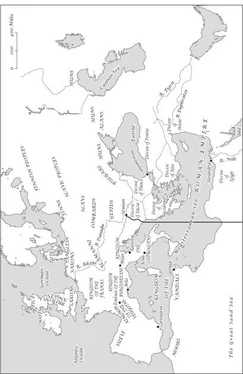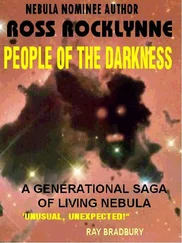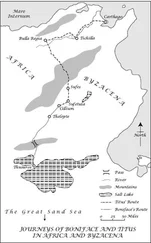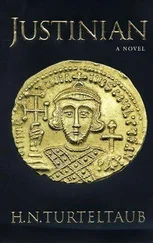Ross Laidlaw - Justinian
Здесь есть возможность читать онлайн «Ross Laidlaw - Justinian» весь текст электронной книги совершенно бесплатно (целиком полную версию без сокращений). В некоторых случаях можно слушать аудио, скачать через торрент в формате fb2 и присутствует краткое содержание. Жанр: Исторические приключения, на английском языке. Описание произведения, (предисловие) а так же отзывы посетителей доступны на портале библиотеки ЛибКат.
- Название:Justinian
- Автор:
- Жанр:
- Год:неизвестен
- ISBN:нет данных
- Рейтинг книги:4 / 5. Голосов: 1
-
Избранное:Добавить в избранное
- Отзывы:
-
Ваша оценка:
- 80
- 1
- 2
- 3
- 4
- 5
Justinian: краткое содержание, описание и аннотация
Предлагаем к чтению аннотацию, описание, краткое содержание или предисловие (зависит от того, что написал сам автор книги «Justinian»). Если вы не нашли необходимую информацию о книге — напишите в комментариях, мы постараемся отыскать её.
Justinian — читать онлайн бесплатно полную книгу (весь текст) целиком
Ниже представлен текст книги, разбитый по страницам. Система сохранения места последней прочитанной страницы, позволяет с удобством читать онлайн бесплатно книгу «Justinian», без необходимости каждый раз заново искать на чём Вы остановились. Поставьте закладку, и сможете в любой момент перейти на страницу, на которой закончили чтение.
Интервал:
Закладка:
protection against lions
Ammianus Marcellinus, the fourth-century soldier-turned-historian, mentions (in his The Histories ) seeing lions in this area.
a. . silent world of pools, lagoons, and reeds
I trust I may be forgiven for having transposed the world of the marsh Arabs (whose way of life is said to go back to the time of the Sumerians) a few hundred miles north-west from the confluence of the Tigris and Euphrates. This is not as capricious as it may sound. Ammianus mentions marshy terrain beside the Euphrates, in the area west of the Naarmalcha Canal (i.e. south of present-day Baghdad) — something that is still the case, as John Keegan in his masterly The Iraq War confirms: ‘Manoeuvre along this stretch of the Euphrates [near Karbala, south of Baghdad] was difficult. The river banks were high, the surrounding ground marshy’. So, my depiction of the topography of this area is more, perhaps, a case of judicious borrowing and augmentation rather than unalloyed invention.
The marsh Arabs had, in the course of many centuries, succeeded in creating an environment in which human activity and nature achieved a perfect balance — a unique, unchanging, and arrestingly beautiful world, which aroused the admiration of many environmentalists, as well as explorers such as Wilfred Thesiger. (See his The Marsh Arabs .) To a monster like Saddam Hussein, such an ideal scenario was of course intolerable, and he set about destroying it (by drainage on a massive scale) with brutal efficiency. Since the fall of his regime however, the area is beginning to recover, and there is hope that the way of life of a unique community may yet be saved.
the poisonous miasma supposedly arising from the marsh
The true cause of malaria was unsuspected at that period, and remained so until the beginning of the twentieth century, when (based on work by Laveran, Sir Ronald Ross, Bignami et al.) breakthrough research showed that the disease resulted not from ‘bad air’, but from the bite of the anopheles mosquito.
a huge bull-like creature
Originating in the East Indies, water-buffalo were domesticated in India thence introduced into the Middle East, Egypt, eastern Europe, and, by the sixth century, Italy. Adapted for marshy situations, buffalo are used as beasts of burden mainly in areas where water is a major feature of the terrain — such as paddy-fields, or the homeland of the marsh Arabs. The most notable difference between the Asiatic and the African buffalo is in the horns. In the Asiatic buffalo, the massive horns are long, curved, and lie back towards the shoulders. In the African buffalo, the horns — equally massive — nearly meet on the forehead in a huge boss, and are markedly recurved with upward-turning points. Though less aggressive than its African cousin, in a wild state (or if returned to the wild from domestication) the Asiatic buffalo is savage and dangerous, capable of unprovoked attack. Even in a domesticated state it is apt to resent injury — an attitude extremely characteristic of the African buffalo (which has never been domesticated).
Chapter 23
a pretty, heart-shaped face
This does indeed describe the countenance of the figure immediately to Theodora’s left in the famous San Vitale mosaic panel. But she almost certainly does not represent Macedonia, of whose fate we remain ignorant. So, a piece of, hopefully permissible, artistic licence on my part. (There has been considerable speculation that the figure, in fact, represents Antonina, wife of Belisarius.) Like the other mosaic portraits in the panel, that of Theodora is thought to be a good likeness, its ‘fragility and air of physical delicacy [suggesting] that perhaps the disease that was eventually to kill her may have been already at work in her’. (Antony Bridge, Theodora .) For the purposes of the story, I have commissioned the mosaics a few years earlier than was actually the case.
Chapter 24
impatient of discipline
A fatal weakness. Despite their great size and strength, plus ferocious courage, Germans were invariably defeated by Roman troops (provided these were properly led), thanks to Roman discipline and superior equipment. The only exceptions to this were when Germans attacked in overwhelming numbers — as on the last day of 406 when a vast confederation of barbarian tribes crossed the frozen Rhine, or when a leader of exceptional quality, capable of imposing discipline and teamwork, took charge. Examples of such Germans are extremely rare: Hermann/Arminius who led a confederation which wiped out three legions in the Teutoburger Forest in AD 9; Fritigern, under whom the Goths destroyed a huge Roman army at Adrianople in 378; perhaps Alaric; and of course Totila. Otherwise. .? (Although he was undoubtedly a great military leader, Theoderic can’t be included, as his victories were against barbarians, not Romans.)
a band of brothers
Besides Totila, some other charismatic leaders capable of inspiring huge personal loyalty are: Alexander, Caesar, Alfred the Great, Robert the Bruce, Henry V, Joan of Arc, Napoleon and (unfortunately) Hitler.
staffing it [the administration]. . with humble Romans
Theoderic’s system in Italy whereby the Goths manned the army, and the Romans the administration, had worked well. Native Romans had by this time lost their taste for fighting, whereas every Gothic male was a warrior. Romans, on the other hand, alone possessed the know-how to manage the complexities of the civil service. The only change here that Totila made was to staff the administration with Romans from a lower social stratum than heretofore.
this second Petronius Arbiter
Petronius, ‘Arbiter Elegentiae’ (memorably played by Leo Genn in the film Quo Vadis? ), was a sort of intellectual and cultural guru at the court of Nero. His brilliant satire, Trimalchio’s Feast (the centrepiece of a fragmentary work, The Satyricon ), gleefully trashes the pretensions of Roman nouveaux riches. You wonder how he might have responded to today’s celebrity culture — perhaps with a satire entitled, Party at Beckingham Palace ?
Chapter 25
the causes of the pestilence
Ignorance as to what caused the bubonic plague of the 540s (the same disease as the Black Death of 1348-49 and the Great Plague of 1665) prevailed, as with malaria, until the early twentieth century. It was then established that the disease is caused in humans by the bacterium pasteurella pestis entering the bloodstream via the bite of a flea — Xenopsylla Cheopsis — whose favourite mode of transport was the warm fur of black rats. It is thought that the rats — moving down the Nile valley from plague-ridden Ethiopia — reached the Egyptian port of Pelusium, whence, spread by ships, the plague became a pandemic, spreading west as far as Wales and east perhaps as far as China. The crowded conditions of most East Roman towns and cities — especially Constantinople — together with rotting piles of refuse outside city walls, provided ideal breeding grounds for rats, which helps to account for the terrifying speed with which the plague spread. (Infection was caused not by contagion but by transfer of fleas, which in crowded conditions virtually amounted to the same thing.) Procopius’ description of the plague’s symptoms and effects is both detailed and commendably accurate.
Competition with brown rats eventually caused a severe decline in the population of the black rat, and thus of the plague itself.
some association with rats
I plead guilty to selective omission here, as John of Ephesus, commenting on the plague, mentions other animals besides rats. However, the fact that he mentions rats at all gives food for intriguing speculation. If physicians of the time had come to associate the plague with rats specifically , then a connection of the disease with rat-borne fleas might eventually have been made, enabling measures of control and avoidance to be taken.
Читать дальшеИнтервал:
Закладка:
Похожие книги на «Justinian»
Представляем Вашему вниманию похожие книги на «Justinian» списком для выбора. Мы отобрали схожую по названию и смыслу литературу в надежде предоставить читателям больше вариантов отыскать новые, интересные, ещё непрочитанные произведения.
Обсуждение, отзывы о книге «Justinian» и просто собственные мнения читателей. Оставьте ваши комментарии, напишите, что Вы думаете о произведении, его смысле или главных героях. Укажите что конкретно понравилось, а что нет, и почему Вы так считаете.












